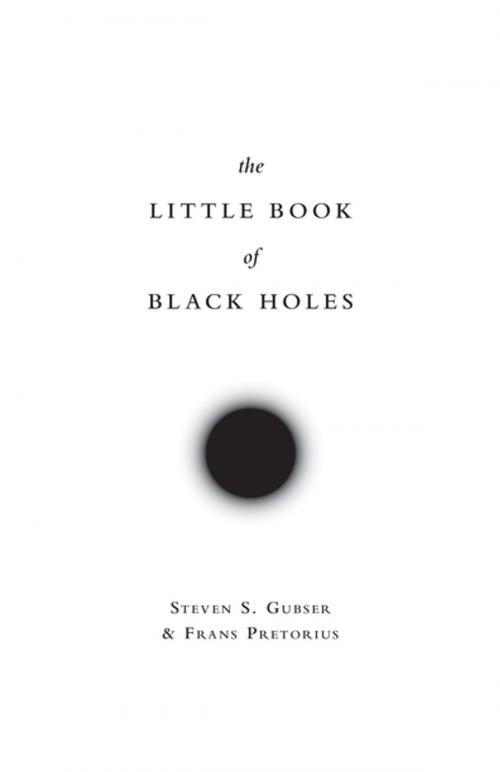The Little Book of Black Holes
Nonfiction, Science & Nature, Science, Physics, Cosmology, Astrophysics & Space Science| Author: | Frans Pretorius, Steven S. Gubser | ISBN: | 9781400888290 |
| Publisher: | Princeton University Press | Publication: | September 25, 2017 |
| Imprint: | Princeton University Press | Language: | English |
| Author: | Frans Pretorius, Steven S. Gubser |
| ISBN: | 9781400888290 |
| Publisher: | Princeton University Press |
| Publication: | September 25, 2017 |
| Imprint: | Princeton University Press |
| Language: | English |
Dive into a mind-bending exploration of the physics of black holes
Black holes, predicted by Albert Einstein’s general theory of relativity more than a century ago, have long intrigued scientists and the public with their bizarre and fantastical properties. Although Einstein understood that black holes were mathematical solutions to his equations, he never accepted their physical reality—a viewpoint many shared. This all changed in the 1960s and 1970s, when a deeper conceptual understanding of black holes developed just as new observations revealed the existence of quasars and X-ray binary star systems, whose mysterious properties could be explained by the presence of black holes. Black holes have since been the subject of intense research—and the physics governing how they behave and affect their surroundings is stranger and more mind-bending than any fiction.
After introducing the basics of the special and general theories of relativity, this book describes black holes both as astrophysical objects and theoretical “laboratories” in which physicists can test their understanding of gravitational, quantum, and thermal physics. From Schwarzschild black holes to rotating and colliding black holes, and from gravitational radiation to Hawking radiation and information loss, Steven Gubser and Frans Pretorius use creative thought experiments and analogies to explain their subject accessibly. They also describe the decades-long quest to observe the universe in gravitational waves, which recently resulted in the LIGO observatories’ detection of the distinctive gravitational wave “chirp” of two colliding black holes—the first direct observation of black holes’ existence.
The Little Book of Black Holes takes readers deep into the mysterious heart of the subject, offering rare clarity of insight into the physics that makes black holes simple yet destructive manifestations of geometric destiny.
Dive into a mind-bending exploration of the physics of black holes
Black holes, predicted by Albert Einstein’s general theory of relativity more than a century ago, have long intrigued scientists and the public with their bizarre and fantastical properties. Although Einstein understood that black holes were mathematical solutions to his equations, he never accepted their physical reality—a viewpoint many shared. This all changed in the 1960s and 1970s, when a deeper conceptual understanding of black holes developed just as new observations revealed the existence of quasars and X-ray binary star systems, whose mysterious properties could be explained by the presence of black holes. Black holes have since been the subject of intense research—and the physics governing how they behave and affect their surroundings is stranger and more mind-bending than any fiction.
After introducing the basics of the special and general theories of relativity, this book describes black holes both as astrophysical objects and theoretical “laboratories” in which physicists can test their understanding of gravitational, quantum, and thermal physics. From Schwarzschild black holes to rotating and colliding black holes, and from gravitational radiation to Hawking radiation and information loss, Steven Gubser and Frans Pretorius use creative thought experiments and analogies to explain their subject accessibly. They also describe the decades-long quest to observe the universe in gravitational waves, which recently resulted in the LIGO observatories’ detection of the distinctive gravitational wave “chirp” of two colliding black holes—the first direct observation of black holes’ existence.
The Little Book of Black Holes takes readers deep into the mysterious heart of the subject, offering rare clarity of insight into the physics that makes black holes simple yet destructive manifestations of geometric destiny.















